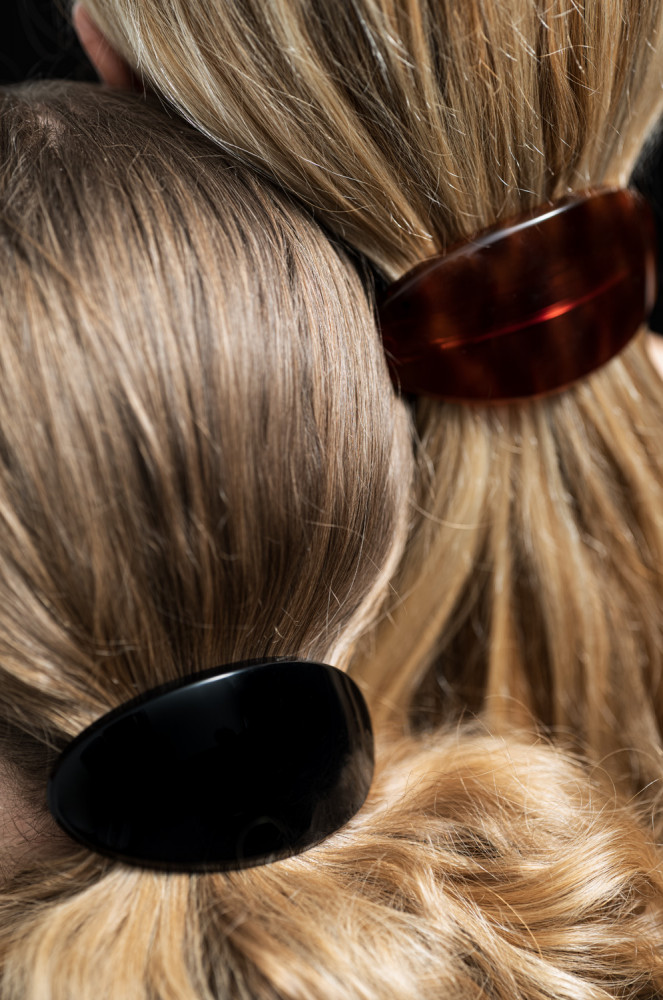
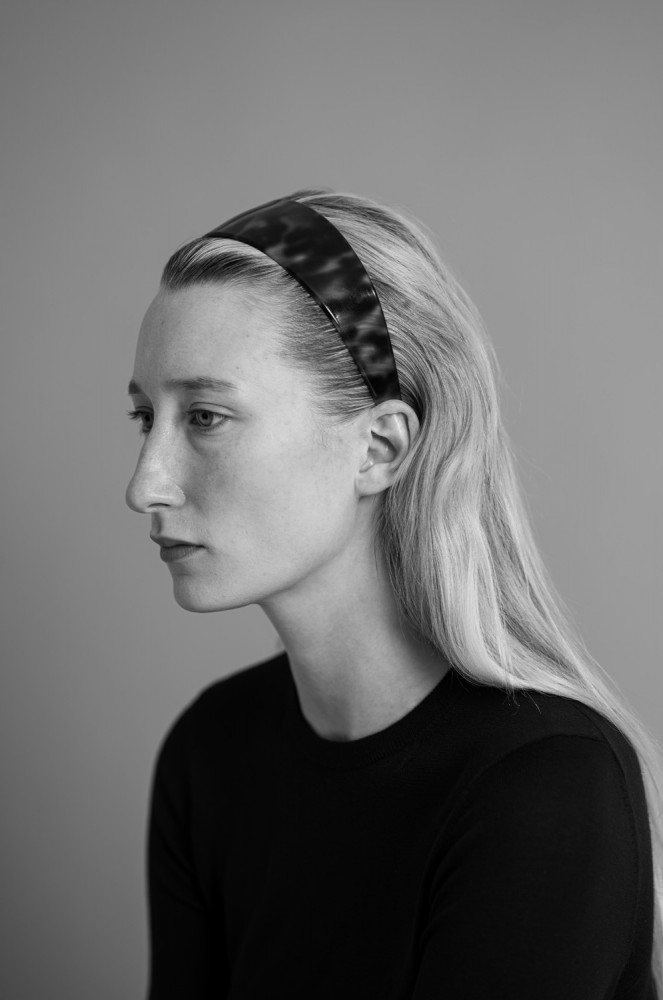
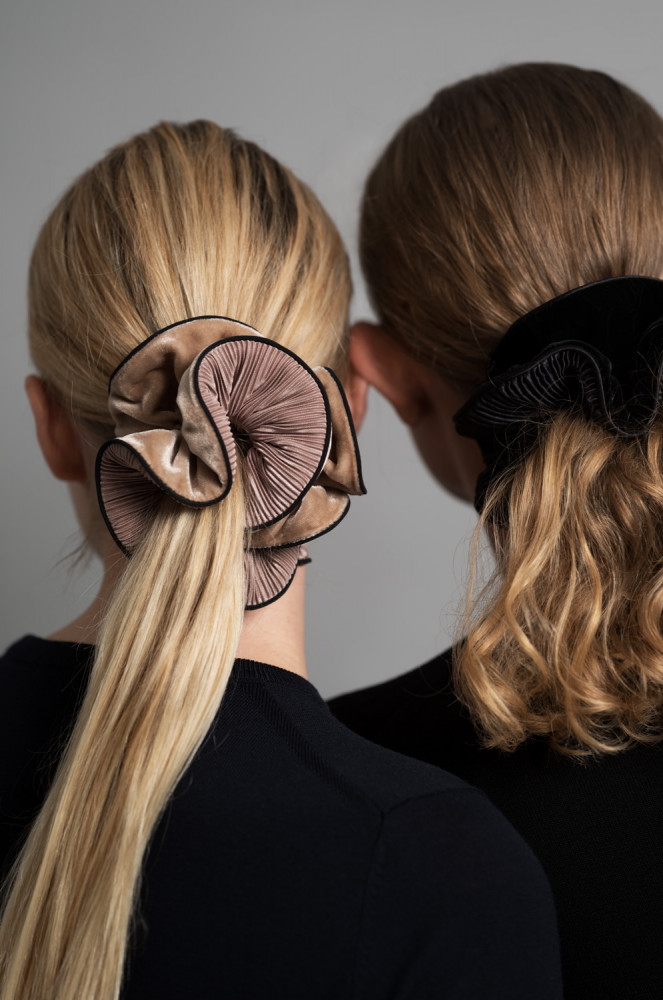
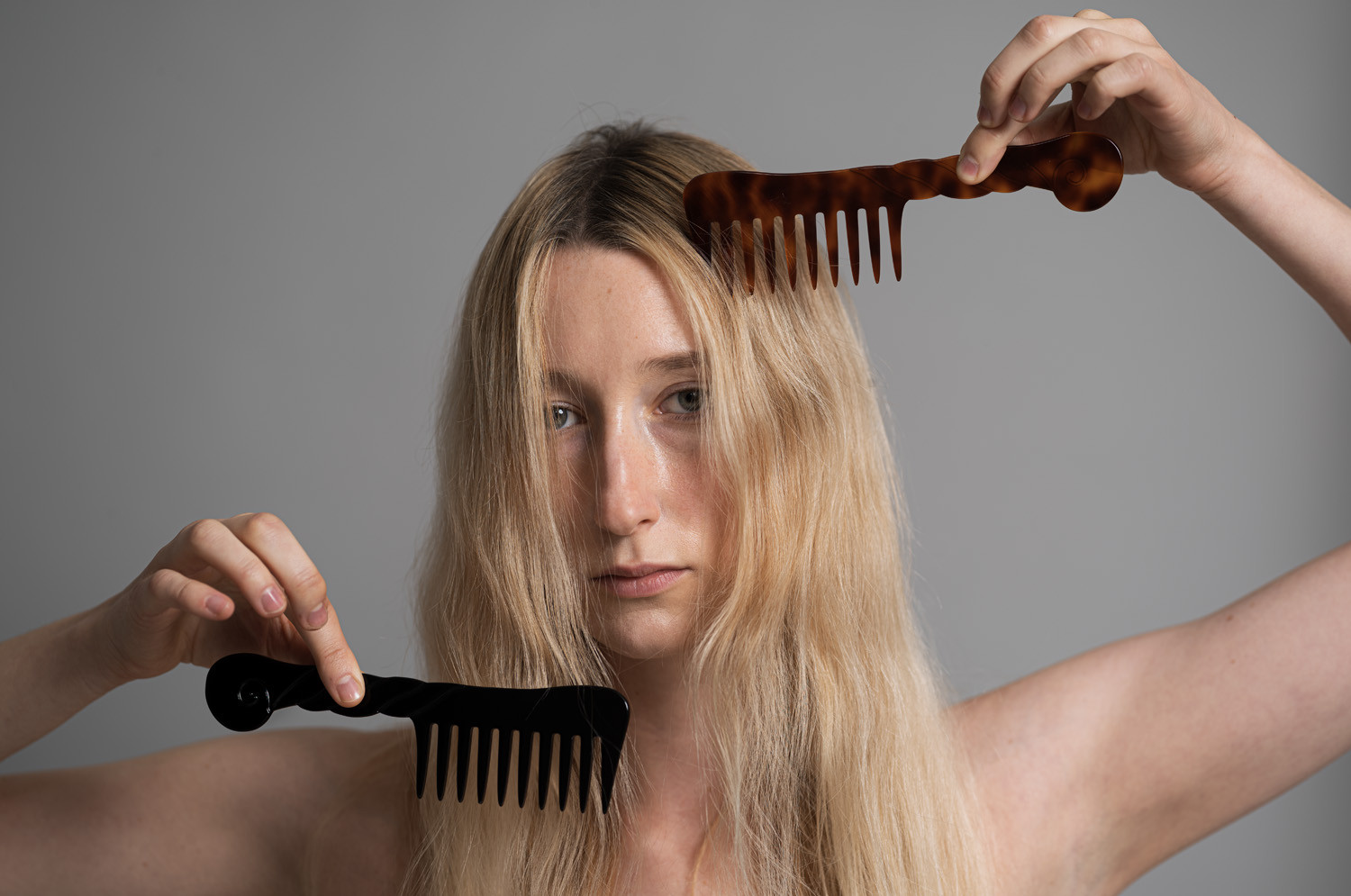
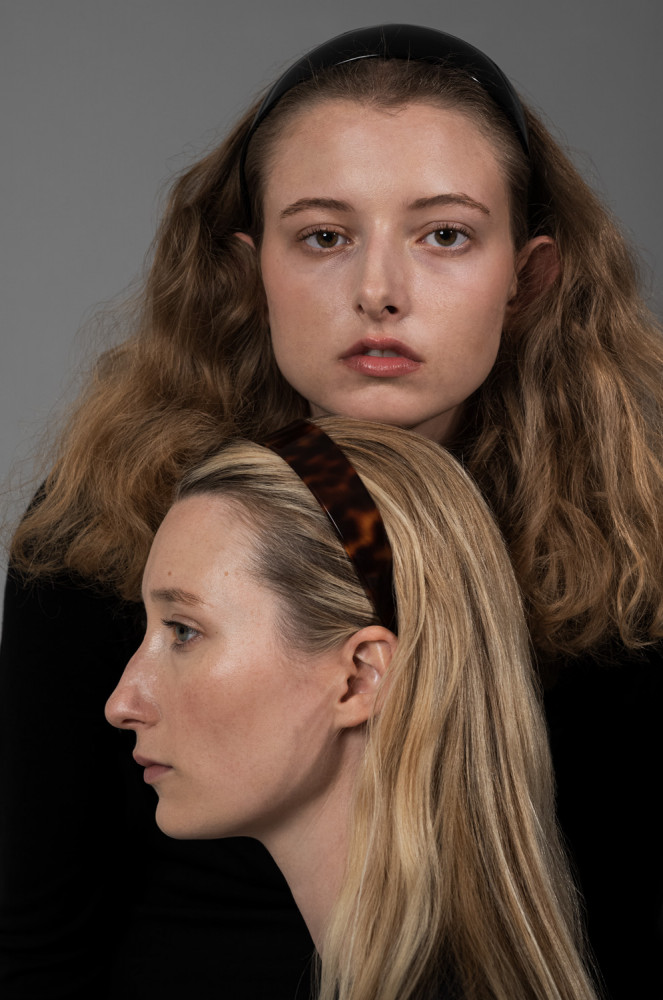
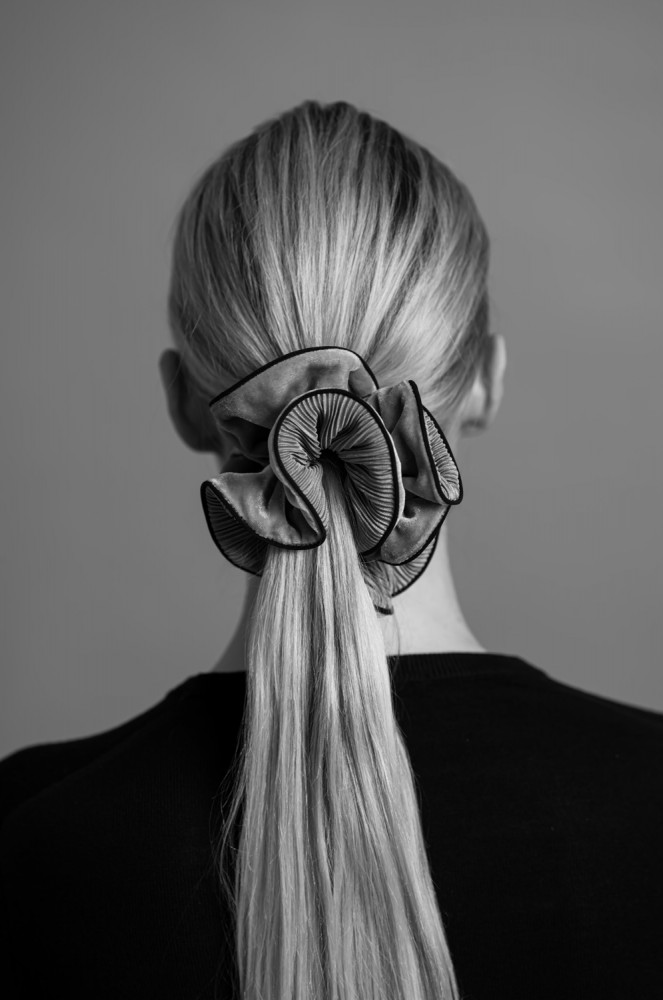






INTERVIEW
Tina Tyrell
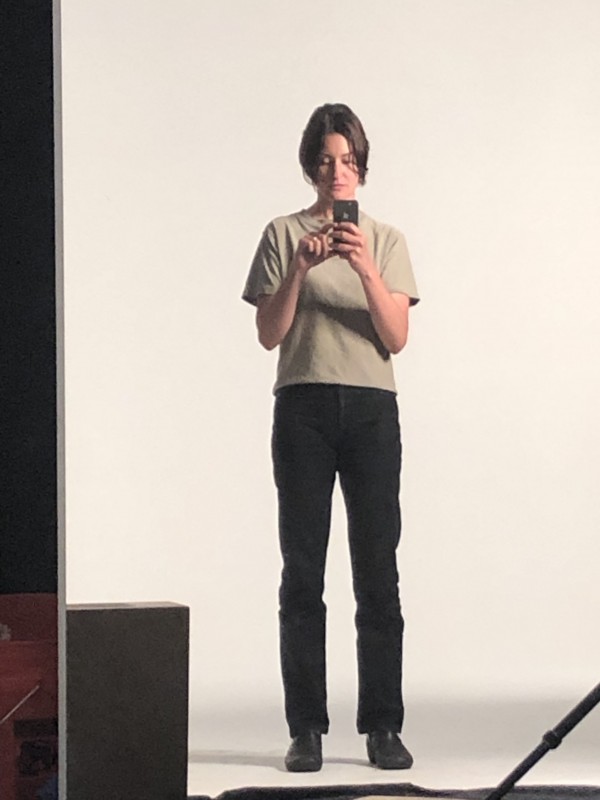
Photographer: Tina Tyrell Sophie Buhai $Hair & Make up: $ Sabina Yannone Models: Anna Cordell, Grace Kull $ Isabella Jusay Off-Site Producer: $Nicole Cari Camera: Leica S (Typ 007) with APO-Macro-Summarit-S 120 f/2.5 (CS)
This project marks the third time the New York based photographer has collaborated with stylist Sophie Buhai. Together with three models and an on-set team, they created a beautifully orchestrated series on hair accessories – using the stylist’s private home is Los Angeles as a makeshift studio.
In our interview, Tina Tyrell talks about the technical challenges of photographing hair, drawing inspiration from 1970s and 80s European cinema, and why this series combines intimacy with formality.
What are your passions, besides photography?
I love old houses, fixing things up, gardening, beautifying and improving existing objects.
What does photography mean to you?
I see photography as something that is in constant dialogue with the world, and since I have been engaging with it almost my entire life, I am always taking new positions on it and seeing what feels right for me. However, when it comes to the actual act of picture taking, one’s psychology and one’s work are inexorably tied.
Which artists have inspired your way of seeing and been part of its evolution?
When I was very young (in middle school and high school) and first started taking pictures, my role models were Man Ray, Paul Outerbridge and Tina Modotti. Later on, in college, I discovered Tina Barney. She took what I loved about photo portraits being representational (some call this painterly) and posited them onto a lifestyle and a world I knew nothing about, but was innately completely fascinated by. I find I’m always compelled to try and view a subject through the lens in a way that transforms their individual personhood into a broader symbol of something more universal. It’s not always possible to achieve this, especially commercially, but when things are working at their best for me, this is what I am trying to create. My interest is in humanity, but not in realism per se.
What are your sources of inspiration?
Right now my kids are the most inspiring and also the most omni-present thing in my life, so that is where my focus has been lately.
You are known for your cinematic yet graphic aesthetics, along with playful, allegorical narratives. What prompted the considerably more pared-down style you used in this series?
I needed to create a scenario where it was possible to see these items on the model’s hair. So I had to reduce the concept in order to keep the focus on that.
Does the series have a title?
There is no title, as this was a project done specifically for my good friend, Sophie Buhai. We were trying to show these small pieces of hair jewellery, so I wanted and needed to create something that felt both intimate yet formal.
What were your thought processes when preparing for this series?
Since I knew it was to be intimate, I was thinking about those soft core European movies from the 70s and 80s. But I don’t think anything usually comes across as overtly sexual in my work – try as I might!
Hair, and hair accessories, are at the centre of this series. Is it difficult to shoot images such as these?
It is a huge technical challenge. You are trying to photograph a reflective object against hair, so I was struggling to get the lighting right so the pieces didn’t highlight too much.
How important is your choice of model, and what makes somebody a good model in your view?
We wanted more than two models, and three felt like a good number. A good model is the most important thing about a picture. I actually prefer to call them subjects, but in the case of fashion, they often actually are models. And it really isn’t easy to be a good model. You need to be able to convey something with your face that goes beyond yourself, to transform and strike a balance between not being too posed but also still looking good. I tend to prefer younger models – even though in real life, I think older people are just as, or even more interesting and beautiful than younger people. But I find that it’s harder for older people to leave themselves behind when they are being photographed, and become someone else. Young people are doing this all the time, so to me, they make great models because they are more flexible.
Who styled this series? And what are you looking for in a stylist?
Sophie styled it. I’m realising more and more what I like in a stylist, and that is the ability to make things look natural.
This series comprises both colour and black & white images. Why did you choose this approach?
No particular reason – I do that a lot. I love black and white, and I love subtracting from the picture, if it works.
You often seem to work with natural light. What can you tell us about your approach, and your preferences? Are there times when you decide to use a flash?
When I was young and doing photography in LA, where I’m from, I used natural light because there was so much of it. Once I’d moved to New York I realised there is no dependable light, and so you need to have lights on hand – especially when shooting indoors.
bold:Do you have any future projects in store? $
I would love to go out and take pictures of strangers I find appealing, for a long-term project idea that I’ve had. But talking to strangers is the scariest thing for me, so it’s very slow going. I want to get better at that, but for now I’m quite busy with my kids – who don’t mind me taking their picture, usually.